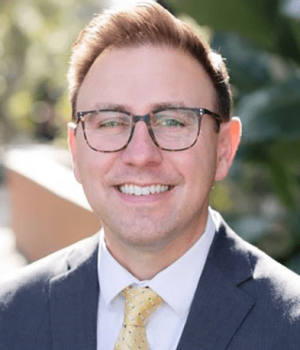
Timothy L. Hawthorne
Department of Geosciences
Professor and Chair
Department of Geosciences
Professor and Chair
Research Areas: GIScience, Participatory GIS, Community Geography, Geoscience Education, UAVs/drones, Social and Environmental Disparities, Belize
Office: 2048 Beard Eaves Coliseum
Phone: (334) 844-4281
Email: tlh0069@auburn.edu
Education
Ph.D., Geography, The Ohio State University
2010
M.A., Geography, West Virginia University
2005
B.A., Geography, Ohio Wesleyan University
2003
Professional Employment
Professor and Chair, Auburn University
2024 - Present
Professor, Auburn University
2024 - 2024
National Geographic Explorer, National Geographic Society
2022 - 2024
Graduate Program Director, University of Central Florida
2020 - 2024
Faculty Fellow, Burnett Honors College, University of Central Florida
2020 - 2021
Associate Professor of Geographic Information Systems, University of Central Florida
2019 - 2024
Florida State Geography Steward, National Geographic Education
2018 - 2020
Associate Professor of Geographic Information Systems, University of Central Florida
2015 - 2019
State Coordinator and Director of Research, The Georgia Geographic Alliance
2013 - 2015
Assistant Professor of Geography, Georgia State University
2011 - 2015
Assistant Professor of Geography, Columbus State University
2010 - 2011
Honors and Awards
Fellow, The American Association of Geographers
April 2025
Research and Teaching Interests
Timothy L. Hawthorne is Full Professor and Chair in the Department of Geosciences at Auburn University. Dr. Hawthorne is a National Geographic Explorer and Fellow of the American Association of Geographers. He is broadly trained in GIS and human geography with expertise in community geography, geographic education, Participatory GIS, mixed methods, and unoccupied aerial vehicles. In 2015, he founded an internationally recognized research and education group called Citizen Science GIS which is now housed at Auburn University. The group’s goal is to connect scientists, educators, teachers, students, and society with geospatial technologies to make science more accessible and responsive to community concerns. At his previous university, he and his team launched the USA’s first GeoBus, a mobile STEAM education lab powered by solar energy on a repurposed 40-foot city that provides geospatial technology learning experiences to K-12 youth, families, and teachers in Florida. At Auburn, he and his team in early 2025 launched Geo Explorers Labs on a 36-foot Class A RV to serve the state of Alabama and beyond as we introduce students, teachers, and community partners to the breadth of geoscience approaches to science and social studies learning. Since 2012, he has passionately mentored and funded the next generation of geography and GIS in community geography fieldwork experiences in Central America and the USA as Principal Investigator of 4 grants from the NSF Research Experiences for Undergraduates and Teachers Site program. These grants have removed financial barriers to research training and fieldwork experiences centered on community geography and GIS for around 100 participants. Additionally, he has served the discipline of geography as former Associate Editor for Journal of Geography and International Journal of Applied Geospatial Research. Dr. Hawthorne has been an active leader with the American Association of Geographers as current Treasurer of the Geography Education Specialty Group; a long-time speaker in the GTU and AAG Visiting Geographical Scientist Program; and former Chair, Vice Chair, and Secretary of the Applied Geography Specialty Group.
Selected Publications
- Yang, B., Hawthorne, T.L., Aoki, L., Beatty, D., Copeland, T., Domke, L., Eckert, G., Gomes, C., Graham, O., Harvell, Hovel, K., Hessing-Lewis, M., Harper, L., Mueller, R., Rappazzo, B., Reshitnyk, L., Stachowitz, J., Tomas, F., Duffy, J. (2023). "Low‐Altitude UAV Imaging Accurately Quantifies Eelgrass Wasting Disease From Alaska to California." Geophysical Research Letters 50.4 (2023): e2022GL101985. http://dx.doi.org/10.1029/2022GL101985
- Hawthorne, T.L., Toohy, K.R., Yang, Bo., Graham, L., Lorenzo, E., Torres, H., McDonald, M., Rivera, F., Bouck, K., Walters, L.J. (2022). “Mapping Emotional Attachment as a Measure of Sense of Place to Identify Coastal Restoration Priority Areas.” Applied Geography 138: 1-11. https://doi.org/10.1016/j.apgeog.2021.102608
- Rees, A., Hawthorne, T.L., Scott, D., Solís, P., Spears, E. (2019). “Toward a Community Geography Pedagogy: A Focus on Reciprocal Relationships and Reflection.” Journal of Geography 120 (1), 36-47. www.tandfonline.com/doi/full/10.1080/00221341.2020.1841820
- Robinson, J. A., & Hawthorne, T. L. (2018). Making space for community-engaged scholarship in geography. The Professional Geographer, 70(2), 277-283. http://www.tandfonline.com/doi/full/10.1080/00330124.2017.1366775
- Hawthorne, T. L., Solís, P., Terry, B., Price, M., & Atchison, C. L. (2015). “Critical Reflection mapping as a hybrid methodology for examining sociospatial perceptions of new research sites.” Annals of the Association of American Geographers, 105(1), 22-47. www.tandfonline.com/doi/full/10.1080/00045608.2014.960041
Last updated: 10/13/2025
